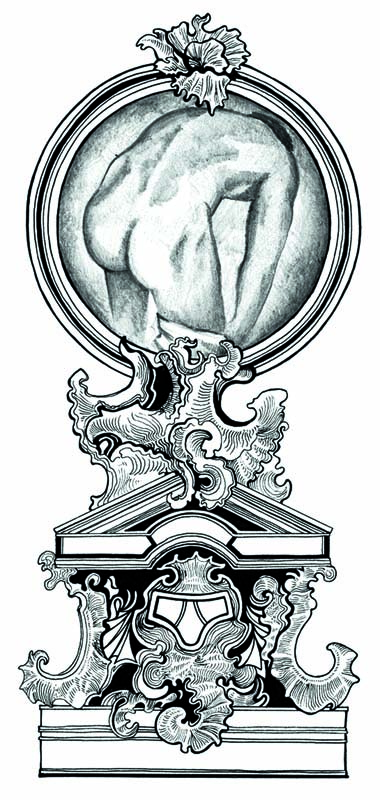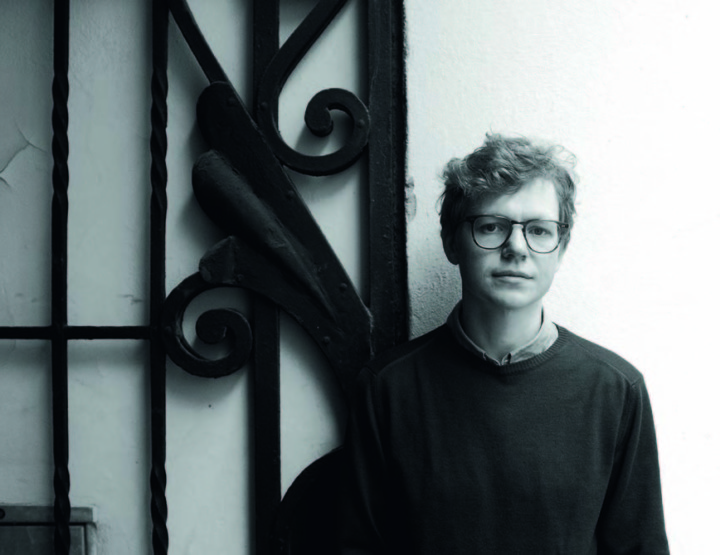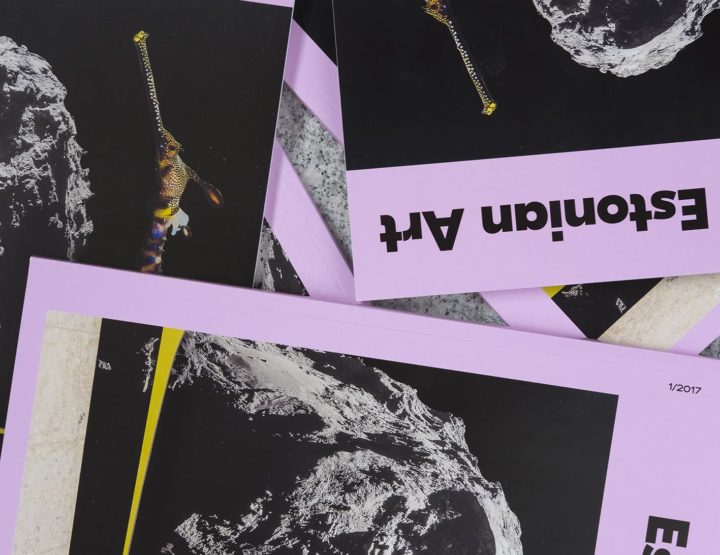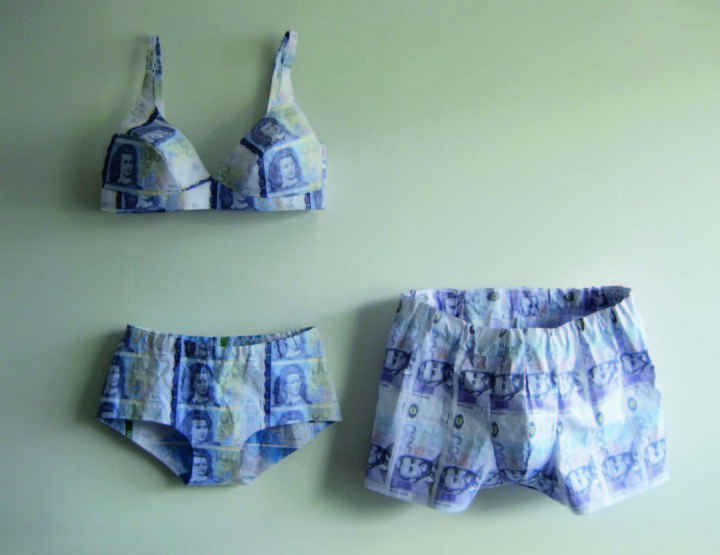Stacey Koosel (SK): Sometimes when I talk to people about your work, they are not aware that the Chairman is based on a real man, and that you have gathered information about this man from archives and interviews with people who knew him. After all these years of getting to know him, how do you feel about the Chairman (dubbed Juhan Ojaste)?
Jaanus Samma (JS): Yes, it is based on the life story of an actual person, but in the end I’m more interested in the generic aspects of his biography than his persona. He has been a tool for me to get closer to understanding what it meant to be gay in 1960s Soviet Estonia. It is important to understand that it is not just the story of one man, but the story of many people: a story that happened 50 years ago and that one day could happen again if we don’t learn from history.
SK: As I understand it, the exhibition deals with the topic of the violation of the human rights of sexual minorities and the oppressive culture of the occupying Soviet regime. Through the life and trials of a small-town man (Juhan Ojaste), does it tells a larger, untold story of Soviet LGBT history?
Eugenio Viola (EV): Although this private story is historically contextualized in Soviet Estonia, in my opinion it becomes just hypertext in order to speak more widely about human rights, as you properly pointed out. In this sense, the Chairman’s story becomes a universal symbol of potentially infinite untold stories of discrimination, and not only about homosexual discrimination, and obviously not only in Soviet Estonia, but everywhere, in the past as in the present. I am not a specialist of Soviet LGBT history. I faced the issue with this project and it was interesting for me to do research in order to better understand the context. I discovered, for example, an active American school of thought, and I jumped into the work of a specialist of this issue, Prof. Kevin Moss, who we invited to contribute about this complex and still under-investigated ‘grey area’ in the catalogue published in conjunction with the exhibition.
SK: NSFW: A Chairman’s Tale is a project that has been many years in the making. When and why did you start researching this character, the Chairman?
JS: I started my research on gay subculture in Soviet Estonia when I was invited to take part in the show Untold Stories at the Tallinn Art Hall in 2011. I began conducting interviews with elderly gay men about the everyday life of previous times. They told me many interesting stories about characters with such nicknames as the Butterfly, the Balloon, the President and the Seal. In the end, I decided to stick with the Chairman because his story was so complete and had elements that are crucial when we talk about gay life in Estonia during the Soviet time.
Also I think his nickname is a good symbol for the downfall of high social positions. Of course, in interpreting the story I combined and mixed it with other elements I found during my research. But I decided to make the exhibition about one man’s personal story because I like the method of investigating micro-histories and concentrating on details. I believe that once we’ve very carefully zoomed in then it is easier to zoom out and understand the bigger picture.
SK: What made NSFW: A Chairman’s Tale a compelling or challenging project? What essential concepts did you want to communicate? What made this project personally interesting to you?
EV: Not Suitable For Work. A Chairman’s Tale, is a challenging project with different perspectives which offer multiple possible interpretations. The first layer is related to the subject, which deals with an uncomfortable topic, a gay discrimination case, in an uncomfortable historical period, the Soviet era. The second recalls untold suppressed memories and repressed identities, which authorize different readings related to the sense of the past and history. The ethical task of the artwork is thorny as it deals with the unexpressed in order to discuss a number of acquired notions connected to the concepts of truth, authenticity and the credibility of sources. The last level provokes counter-interpretations capable of creating alternative visions and points of view, beyond the historical, social, political and cultural references, as well as gender ones. For all these different reasons, I am personally interested in this project.
SK: You’ve made a small-town man from a small country into part of the international psyche. How do you communicate where he came from? How do you interpret and communicate what life was like in the Soviet Union?
JS: Of course we were aware of the international audience of the Venice biennale and we decided to open up the context. So, for example, I decided to add some archive photos of the kolkhozes, of the city of Tartu, etc. But the main challenge was to communicate the story so that visitors would not bother too much about understanding the exact context of time and place, instead leading them to a general understanding of the wider meaning of the exhibition, which is universal.
SK: You’ve said the story of the Chairman is a Soviet Estonian story, as he grew up in the Soviet Union and died in 1990 just before the Estonian Soviet Socialist Republic (ESSR) ceased to exist and homosexuality was decriminalized. Twenty-four years after decriminalization, how has life changed for sexual minorities in Estonia?
JS: If we compare the condition of sexual minorities at present with the Soviet period then of course it has changed a lot. But I think it should have changed more. If we compare Estonia with the countries we usually like to compare ourselves with, then it is obvious that we have a long way to go. I understand that we cannot raise salaries to the level of Switzerland for example, but making a country more tolerant doesn’t cost anything.
SK: You are an internationally successful curator, and have worked with many well-known artists of different nationalities. Jaanus is not the first Estonian artist that you have worked with? Do you have any future plans for collaborations with other Estonian artists?
EV: I was introduced to the interesting Estonian art scene during my first visit to Tallinn in 2008. I was working with Reet Varblane to move ORLAN’s retrospective from Le Museé d’Art Moderne de Saint Etienne to the Kunstihoone. It was during this time that I met Mark Raidpere, a talented artist whom I admire and respect, and whom I now consider a friend. I worked with him successfully in Naples in 2012, when he invited me to curate his site-specific exhibition at the Morra Greco Foundation, which resulted in two further projects: the first at the Michel Rein Gallery, in Paris, and then, co-curated with Anders Härm, at EKKM. Anders invited me to be part of the Köler Prize jury, which resulted in my encounter with Jaanus. At the moment, I am still working on this project, which was very well received in Venice, both by the public and by a number of art professionals… Regarding future Estonian plans, nothing is fixed yet, but I am open to suggestions.
SK: As a curator you have worked with the topics of art and homosexuality extensively. Do you consider yourself an activist? If so, do you see similarities between the current social conditions in Italy and Estonia?
EV: That is true. I have worked extensively on this topic, both on the curatorial and theoretical sides. I think art has to face reality from different perspectives and point of views, in order to provide the opportunity to perceive from different points of view the contradictions and wounds that still surround our uncertain times. I think it is important to face these issues at this precise historical moment, which is characterized by new waves of fundamentalism, as all fundamentalism is intolerant of any real or supposed ‘difference’. However, I don’t consider myself an activist. I am a curator, trying to work in an ethical way, although I deal often with political and problematic issues.
Actually, I don’t see any similarity between Estonia and Italy. I could mention some corresponding elements in our history, related not only to the homosexuality ‘problem’, but also to the repression of all forms of expression and dissent, common in both the Fascist era and Soviet times. The time-frames of these experiences were slightly different in the two countries, but that just emphasizes how authoritarian power is characterized by a meta-historical approach.
Regarding the present, I think Estonia is much more tolerant than Italy. For example, I didn’t receive any questions in Estonia about the fact that I was dealing with a ‘gay story’ and because of that no Estonian newspaper launched any debate about why Estonia decided to accept such an uncomfortable issue to represent the country at the Venice Biennale. Unlike several European countries, in Italy we still don’t have any ‘suitable’ laws for common-law couples and common-law marriages, because the Italian parliament is still debating it. Gay couples can’t get married and for gays to adopt a baby is obviously blasphemy; it is too simplistic to justify this attitude with the proximity, not just geographical, of the Vatican…
In 2007 I curated the first institutional exhibition about the slippery relationship between art and homosexuality in Italy. It was promoted by the cultural councilor in Milan, but the former mayor of the city censored the catalogue, ten pieces in the exhibition and the opening. I did not accept the censorship and the exhibition never re-opened… This was followed by a huge international scandal and I took the risk of career suicide, but I moved this exhibition, uncensored, to Florence after four months…I don’t think in Estonia such a thing could happen.
SK: A visceral and raw element of this exhibition are the videos. I understand that the videos were made in collaboration with Marko Raat. How did this collaboration start?
JS: My first collaboration with Marko was when he curated the show Corporal Punishment in EKKM in 2012. He invited me to participate in the show with the garden installation with nettles Passage. When the show opened, we both had a very abstract idea of doing something together in the future. So, when I decided to take part in the open call for an Estonian pavilion in the Venice biennial, I immediately asked Marko if he would be interested in making a few videos with me for the show. I enjoyed the process, because when it comes to work Marko is much more uncompromising than I am and I admire that a lot.
SK: The theme of this year’s Venice Biennale is All The World’s Futures. Does NSFW: A Chairman’s Tale touch on the future? Or is it a project firmly rooted in the past?
EV: Our project was thematically centered in Enwezor’s vision for the Biennale. NSFW: A Chairman’s Tale deals with the past in order to admonish the future, in a preparatory way. Jaanus’ practice is driven by a preoccupation with the past in order to investigate the present. It is connected to his archive-based methodology. His work is an attempt to critically formalise a visual and cultural experience, suspended between past and present, that challenges the concepts (today more relevant than ever) of memory and identity. I think to investigate our roots in the past without being rhetorical means studying contemporaneity and applying our critical faculties to address the burdensome significance of social, political, economic and cultural change. It means exploring the layers of culture, the ruins of history, clashing with the changing value system, eradication, the erosion of the principle of inheritance and an emphasis on differences – and art is always in favour of the coexistence of differences, whether racial, social, political or gender-based.
Stacey Koosel (1982), a contemporary art curator, media theorist and art critic born in Thunder Bay, Ontario, Canada. In 2015 she defended her PhD dissertation entitled The Renegotiated Self: Social Media’s Effects on Identity at the Estonian Academy of Arts. Her areas of research include contemporary culture, contemporary art, media ecologies and the philosophy of technology.
Eugenio Viola (1975) is chief curator at the Madre museum in Naples. He has worked with such world names as Marina Abramovic’, Teresa Margolles and Tanja Bruguera; he also knows Estonian art life quite well, having curated Orlan’s exhibition at the Tallinn Art Hall in 2008 and the solo exhibition of Mark Raidpere in 2013. He was the curator of jaanus Samma’s project at the 56th Venice Biennale.







